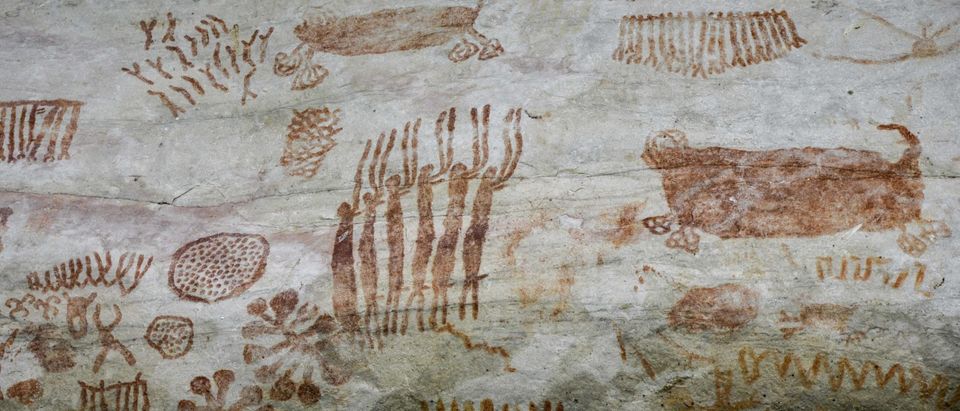A team of British-Colombian archeologists unearthed a collection of prehistoric rock art in the Amazon rainforest that is estimated to date back 12,500 years, numerous sources reported.
The discovery of the tens of thousands of paintings of animals and humans was made last year, but was kept secret until Sunday as it was filmed for a video series, the Guardian reported. The paintings were called the “Sistine Chapel of the ancients” and are on a cliff that is nearly eight miles in length in Colombia.
Thousands Of Ancient Rock Art Paintings Including Ice Age Giants Discovered In Remote Amazonhttps://t.co/tZcRaDeSSI pic.twitter.com/aNdhD0uvF4
— IFLScience (@IFLScience) November 30, 2020
The site is in a remote part of the country that required a two-hour journey on foot from after a two hour drive from San José del Guaviare. The area also has numerous deadly snakes, making the trek especially dangerous. (RELATED: Archeologists In Spain Discover Over 400 Tombs In Ancient Burial Site)
Among the paintings of animals are depictions of the mastodon, an extinct ice age animal that hasn’t lived in South America for at least 12,000 years, leading experts to believe the paintings are up to 12,500 years old.
“We started seeing animals that are now extinct,” José Iriarte, the leader of the team of archaeologists said, according to the Guardian. “The pictures are so natural and so well made that we have few doubts that you’re looking at a horse, for example.”
Iriarte said the horse was an ice age creature, and was so detailed that even the hair drawn on it was visible. Other animals include fish, turtles, lizards and birds. Humans were depicted dancing and holding hands.
He noted that there were images of large animals surrounded by small men with their arms raised, in a way that could suggest worship. He added that for Amazonian people, non-humans have souls and “communicate and engage with people” through the different rituals depicted in the art.
The team will return to search for more paintings once the pandemic is no longer an obstacle, according to the Guardian.












